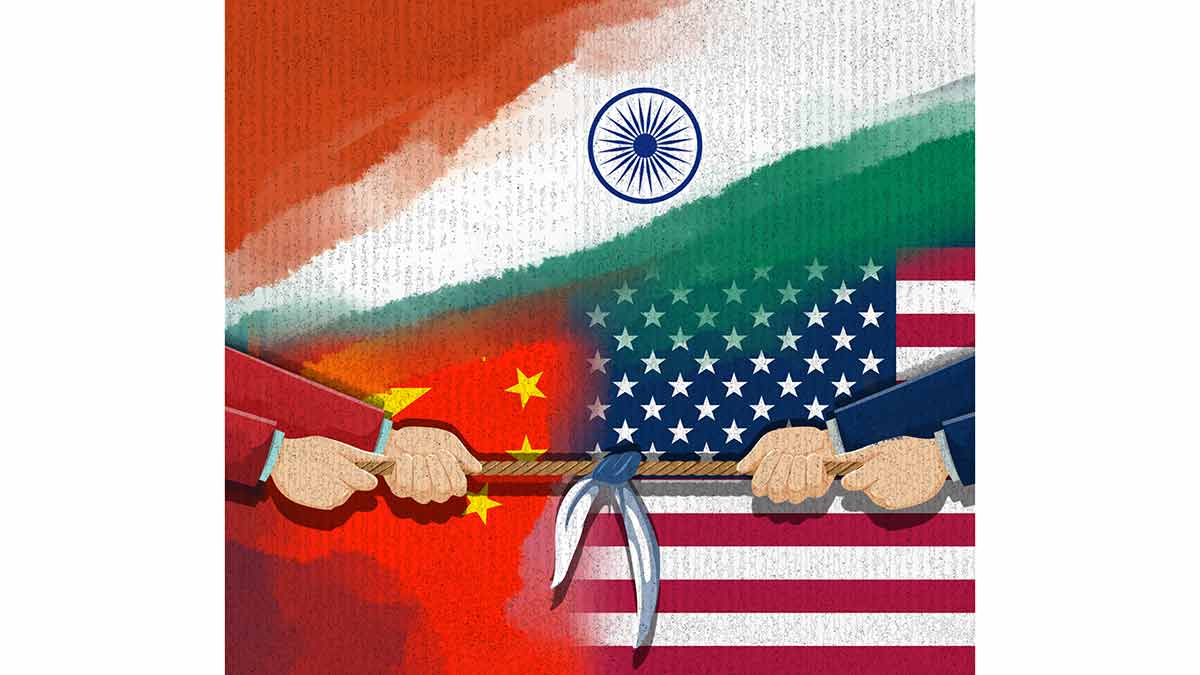India's 'MIDWIFE' strategy to China's 'MIDLIFE': How New Delhi has been quietly working to counter Chinese influence

If the recent India-Pakistan conflict has revealed anything, it is how much stake China had in the clashes. Though not directly involved, China used Pakistan as a testing ground against India, advertising its weapons and to test India's defence system.
But, China's India tactic isn't anything new. Geopolitical experts have observed how China has been ramping up pressure on India, sandwiching it via a "string of pearls" in the South and coercive tactics in the North. It is also using Pakistan in the West and luring Bangladesh in the East as a means to encircle India. All these while keeping the Sino-Indian border dispute simmering to keep India restless.
But, observers say India is not passively enduring all. Experts from the Australian Institute of International Affairs have elaborated how New Delhi has been quietly asserting its influence in the region through a "multifaceted and deliberate foreign policy", which they encapsulated in the acronym "MIDWIFE" as opposed to China’s "MIDLIFE" strategy.
As per experts, China has a "MIDLIFE" strategy against its global rival — the United States. This involves Military, Intelligence, Diplomacy, Legal, Identity, Financial and Economic efforts.
In contrast, India's 'MIDWIFE' approach encompasses Multipolarity, Indo-Pacific Strategy, Demography, Washington, Indian Ocean, Foreign Direct Investment, and English, according to the report by Professor Patrick Mendis, presidential advisor to the National Security Education Board at the US Department of Defense, and Professor Antonina Luszczykiewicz-Mendis, a visiting scholar at the University of Oxford China Centre.
Multipolarity: By championing multipolarity, Delhi aims to strengthen its strategic autonomy in global affairs. By rebranding its Non-Aligned Movement approach, India has upgraded friendly realtors with regional powers, irrespective of their political and ideological orientation. The reluctance of India to form a military alliance is a feature of this policy.
Indo-Pacific strategy: For India, the Indo-Pacific is no longer a restricted area, since how Japanese Prime Minister Abe Shinzo lured Prime Minister Narendra Modi to adopt the vision of the 'free and open Indo-Pacific' (FOIP) framework. India is now a member of the Quadrilateral Security Dialogue (Quad) with Australia, Japan, and the United States.
Professor Mendis and Professor Luszczykiewicz-Mendis cite India's expanding presence in the South China Sea as an example which includes India-Indonesia ties in defence, Delhi's pact with the Philippines to supply BrahMos missile, Indian Navy training of Vietnamese forces at the Cam Ranh Bay.
Demography: India has a demographic advantage in contrast with China's ageing population. "Equally important is the role of the dynamically growing Indian diaspora, composed of highly-skilled professionals and outstanding students—not just in English-speaking countries like the United States and the United Kingdom, but also in countries like Poland and Taiwan," the author adds.
Washington: The United States remains India’s most indispensable ally and the countries have increased defence ties. The Indian government's rapport with the successive Democratic and Republican administrations demonstrates the continuity of bilateral engagement.
Indian Ocean: India has been considered the guardian of the Indian Ocean, a position endorsed by the US. India is also reviving foreign relations with key maritime neighbours like Sri Lanka and Maldives. The report also mentions how India is using the strategic location of its Andaman Islands to monitor China’s “scientific” seabed surveys and navigational activities across the deep waters.
Foreign direct investment: India is attempting to challenge the 'Made in China' manufacturing sector via the 'Make in India' initiative. It aims to attract foreign investment to reduce Indian dependence on trading with China and to boost technological self-reliance.
English: India has an edge over China with its mastery of English and has been leveraging its linguistic alignment with the global marketplace, to conduct diplomacy and encourage student mobility.
World